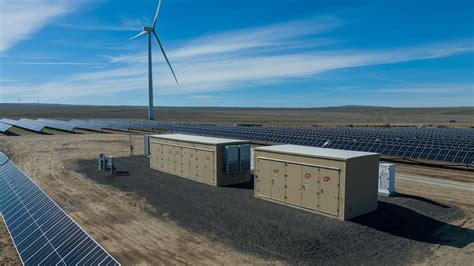In a world where the push for renewable energy sources like wind and solar power is stronger than ever, giant batteries have emerged as the unsung heroes of the energy sector. These mammoth power storage units have been steadily gaining ground across America, playing a crucial role in making the electric grid more efficient and reliable. But recent developments on the political front threaten to cast a shadow over this booming industry.
The Rise of Grid Batteries
Over the past half-decade, grid batteries have experienced exponential growth, swiftly becoming one of the fastest-growing sectors within the U.S. energy landscape. States such as Texas and Arizona have witnessed a surge in installations of massive lithium-ion battery arrays, each container-sized stack serving as a reservoir for surplus wind and solar energy, ready to be unleashed when demand peaks. In California, these batteries have proven instrumental in storing excess solar power for nighttime consumption, effectively reducing reliance on fossil fuels like natural gas.
The Trump Tariffs: A Looming Threat
Despite their pivotal role in revolutionizing how we harness electricity from renewable sources, the majority of America’s lithium-ion batteries are currently imported, with China accounting for a substantial 69 percent share of these imports in 2024. The recent announcement by President Trump regarding sweeping tariffs has sent shockwaves through the industry. These new trade measures combined with previous tariff maneuvers will slap a hefty 64.5 percent tax on grid batteries imported from China—a figure set to escalate to a staggering 82 percent by next year.
Jason Burwen, Vice President of Policy and Strategy at GridStor—an eminent player in battery development—expressed grave concerns about how these tariffs could stifle progress in U.S. energy storage endeavors: “This will throttle U.S. energy storage deployment,” he lamented in a poignant social media post.”Bad for business, bad for grid reliability.”
Impact on Energy Landscape
Energy companies had been gearing up to roll out an unprecedented 18,200 megawatts worth of grid battery capacity this year—a quantity ample enough to hoard all output from 18 sizable nuclear reactors over several hours—as per projections by the U.S Energy Information Administration (EIA). This surge was poised to see an overwhelming dominance of batteries along with wind and solar power accounting for a monumental 93 percent share of added grid capacity.
The abrupt imposition of tariffs comes at a time when utility-scale battery capacity within the country had already witnessed an impressive uptick by 66 percent compared to figures from just one year prior according to EIA data.
As giant batteries continue transforming how electricity is utilized nationwide by facilitating post-sunset solar power delivery in California and bolstering grid stability elsewhere across states—it remains uncertain how these latest political maneuvers will impact this critical technology’s trajectory moving forward.

